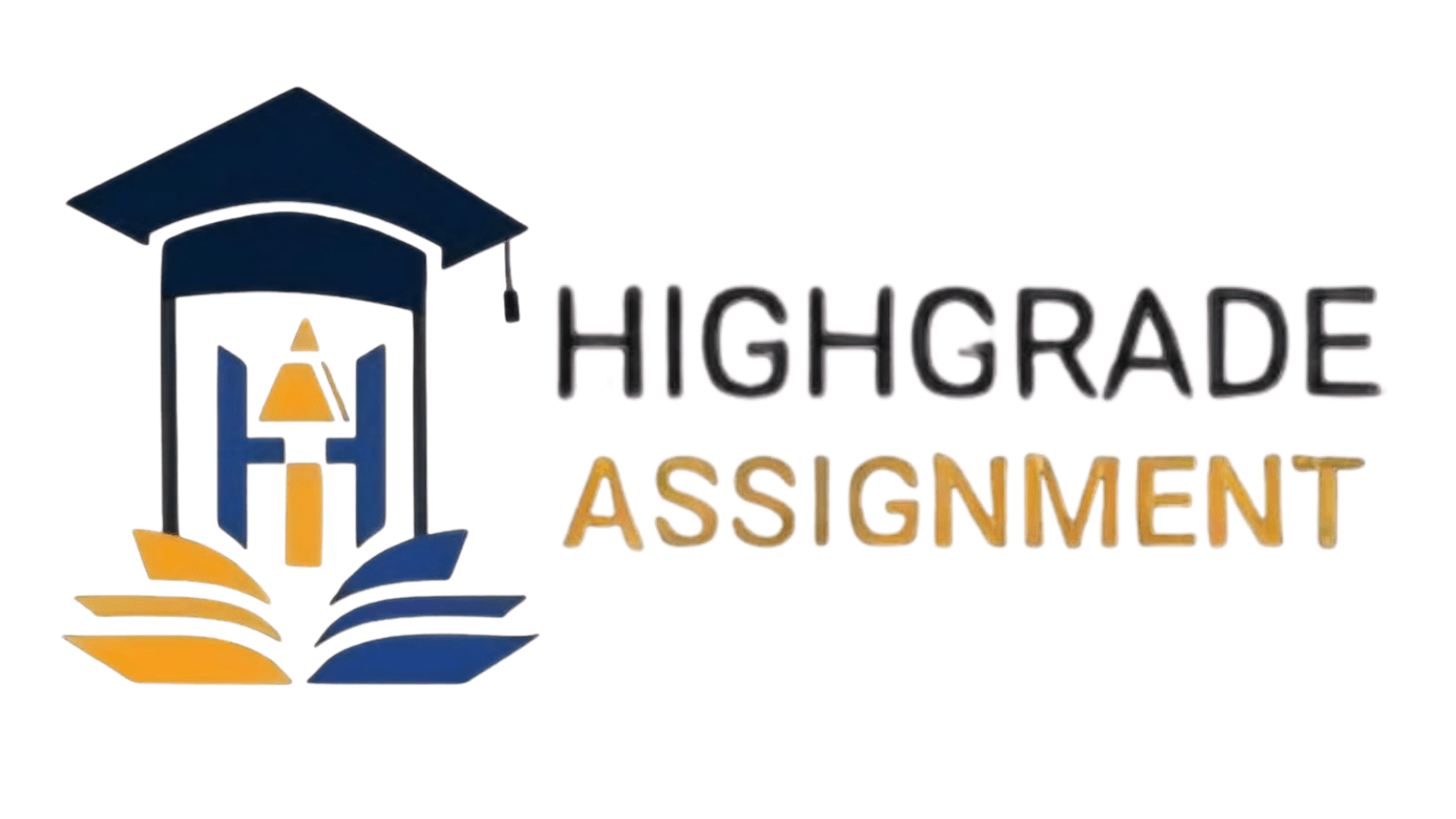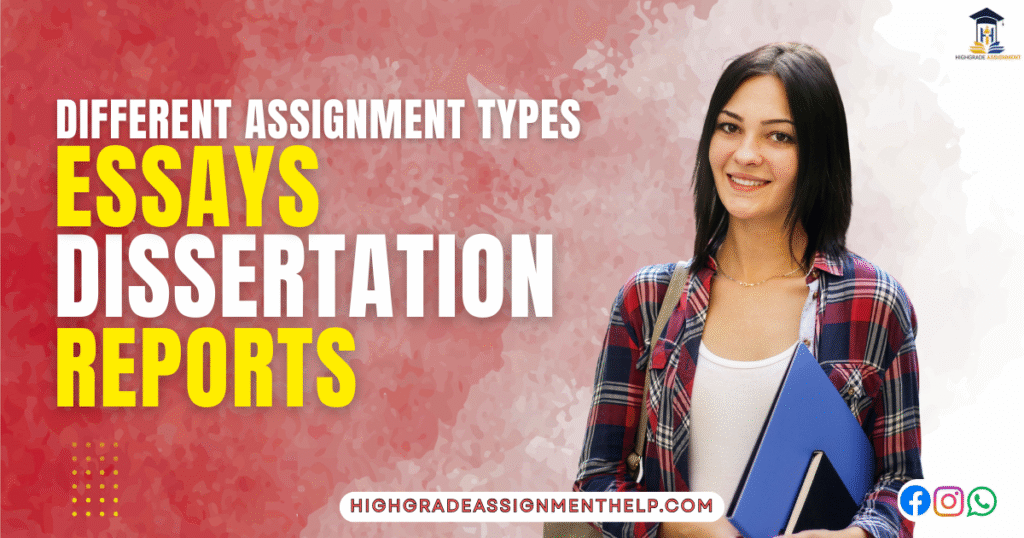In the academic world, there are multiple assignment types and students are expected to produce a wide range of written work. From analytical essays to structured reports and comprehensive dissertations, each form serves a unique purpose and follows specific guidelines. Yet, many students struggle to differentiate between these assignment types, often losing marks due to improper structure or misunderstanding the expectations.
This article explores the most common assignment types — essays, reports, and dissertations — helping students grasp their key differences, structures, and expectations. Whether you’re a university freshman or a postgraduate researcher, understanding assignment types is crucial to academic success.
What Are Assignment Types?
Assignment types refer to various formats of academic writing that students must complete during their studies. Each type is designed to assess different skills such as critical thinking, research, analysis, problem-solving, and written communication.
While some assignments are reflective and subjective, others are factual and data-driven. Understanding assignment types allows students to adapt their writing style, tone, structure, and content accordingly. The three most common types are:
Essays
Reports
Dissertations
Let’s examine each one in detail.
1. Essays: Analytical and Argumentative Writing
An essay is one of the most widely used assignment types in academia. Essays are primarily written to present an argument or point of view, supported by evidence from credible sources.
Purpose of an Essay
Essays are meant to:
Present a clear argument or thesis
Develop ideas logically
Evaluate evidence
Demonstrate critical thinking and analysis
Structure of an Essay
A standard academic essay follows this format:
Introduction – Introduces the topic, presents the thesis statement
Body Paragraphs – Each paragraph covers a specific point supporting the thesis
Conclusion – Summarises the argument and restates the thesis
Types of Essays
Common essay types include:
Expository Essays – Explain or inform a topic
Argumentative Essays – Defend a specific point of view
Descriptive Essays – Describe an object, person, or place
Analytical Essays – Analyse a piece of literature, data, or situation
Tips for Writing Effective Essays
Start with a strong thesis statement
Use credible references
Maintain logical flow between paragraphs
Avoid personal opinions unless asked
Follow academic referencing style (APA, MLA, Harvard, etc.)
2. Reports: Structured and Factual Documents
A report is another formal assignment type, often used in science, business, or technical courses. Unlike essays, reports are highly structured and may include headings, bullet points, diagrams, and tables.
Purpose of a Report
Reports are used to:
Present factual information
Analyse a situation or data
Provide recommendations based on findings
Structure of a Report
Reports generally include:
Title Page
Table of Contents
Executive Summary
Introduction
Methodology
Findings or Results
Discussion
Conclusion
Recommendations
References
Appendices (if applicable)
Types of Reports
Some common report assignment types are:
Lab Reports
Business Reports
Case Study Reports
Research Reports
Project Reports
Tips for Writing Reports
Use headings and subheadings
Be objective and concise
Support findings with data
Include visuals (charts, tables, graphs) where necessary
Use clear and formal language
3. Dissertations: In-Depth Research Projects
A dissertation (or thesis) is a major academic work required for postgraduate and doctoral students. It is one of the most advanced assignment types, requiring extensive research, analysis, and original thinking.
Purpose of a Dissertation
Dissertations aim to:
Explore a specific research question in depth
Contribute new knowledge or insights to a field
Demonstrate mastery of research methodology
Structure of a Dissertation
A dissertation is more detailed than essays or reports. It usually contains:
Title Page
Acknowledgements
Abstract
Table of Contents
Introduction
Literature Review
Methodology
Results
Discussion
Conclusion
References/Bibliography
Appendices
Types of Dissertations
Empirical Dissertations – Involve data collection and analysis
Non-Empirical Dissertations – Based on existing research and theories
Narrative/Reflective Dissertations – Common in creative and education-based research
Tips for Writing Dissertations
Begin early and plan each section
Conduct thorough literature review
Justify your research methods clearly
Stay consistent with citation style
Seek feedback from your supervisor regularly
Key Differences Between Essays, Reports & Dissertations
| Feature | Essay | Report | Dissertation |
|---|---|---|---|
| Purpose | Argue or analyse a topic | Present findings or analysis | Conduct original research |
| Tone | Formal, critical | Formal, objective | Formal, academic |
| Structure | Intro-Body-Conclusion | Headed sections | Chapters with in-depth sections |
| Length | 1000–3000 words | 1500–5000 words | 10,000–20,000+ words |
| Use of Data | Limited | Extensive | Extensive |
| Audience | Academic readers | Academic or professional | Academic panel/supervisors |
Why Understanding Assignment Types Matters
Misunderstanding the assignment type can lead to:
Improper formatting
Incorrect tone or style
Lack of critical analysis or data
Loss of grades despite good content
When students clearly understand assignment types, they can meet academic expectations and submit work that aligns with assessment criteria. For example, writing a dissertation like a report may lead to significant grade deductions.
Common Mistakes Students Make with Assignment Types
Mixing up formats – Using an essay structure for a report or vice versa.
Ignoring guidelines – Not following word limits, referencing style, or submission rules.
Lack of planning – Especially in longer assignments like dissertations.
Poor referencing – Plagiarism due to improper citation.
Insufficient research – Especially harmful in data-driven assignments.
Avoiding these mistakes begins with fully understanding your assignment type and requirements.
How Assignment Help Services Can Assist
Professional assignment writing services are not just for those struggling — they’re valuable tools for any student looking to improve their work. Here’s how such services help with various assignment types:
Essay Writing Help – Receive expert guidance on structuring arguments, refining thesis statements, and referencing sources.
Report Writing Help – Get assistance with data interpretation, formatting reports, and writing executive summaries.
Dissertation Help – Support with topic selection, literature reviews, research design, and proofreading.
By understanding assignment types, you’ll be better equipped to communicate your needs clearly when seeking expert help.
Final Thoughts
Navigating academic life involves tackling a variety of assignment types, each requiring a unique approach. Whether it’s constructing logical arguments in an essay, presenting data in a report, or conducting in-depth research for a dissertation, mastering these formats is essential to academic success.
Before starting any assignment, take the time to:
Understand the objective
Follow the structure
Use the appropriate tone and language
Cite your sources properly
And when in doubt, don’t hesitate to seek support from professionals or academic tutors.

